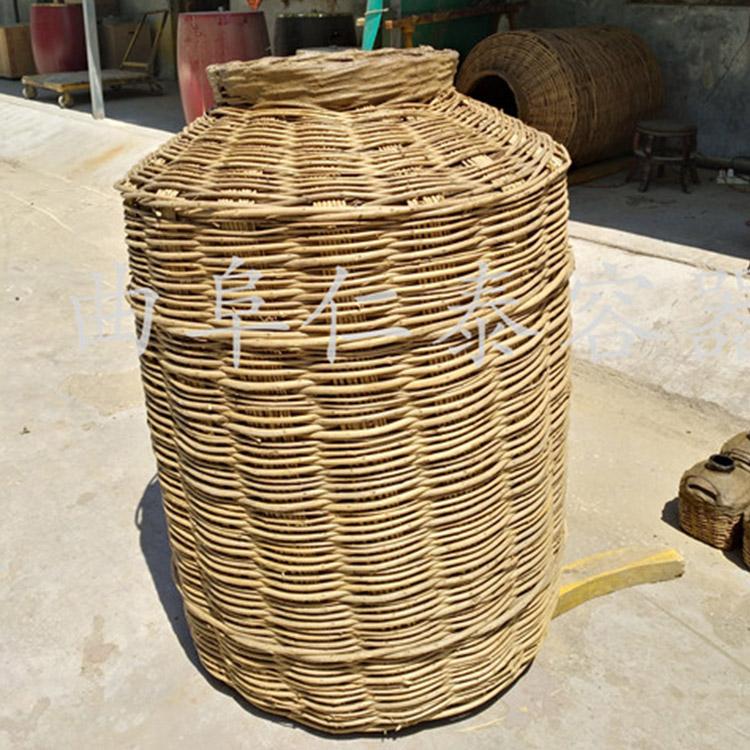夏日酿酒需求哪些操作?传统酿酒有冬歇九、夏歇伏的说法,意思是夏天或者冬季温度太高或太低对发酵不利。而酿酒发酵更适合的温度为20-30℃之间,而夏日温度高,再加上传统酒曲的酶活力差,不耐高温,温度过高,发酵简单酸败,那么白酒酿造怎么度夏呢?
What operations do you need to make wine in summer? Traditional winemaking has the saying of resting in winter and resting in summer, which means that too high or too low temperature in summer or winter is harmful to fermentation. However, the most suitable temperature for liquor fermentation is between 20-30 ℃, and the high temperature in summer, coupled with the poor enzyme activity of traditional distiller\'s yeast, which is not resistant to high temperature, high temperature, simple fermentation and rancidity, how can liquor brewing survive safely in summer?

一、温度操控
1、 Temperature control
温度的操控是酿酒或者说是酿造好酒的关键因素之一,很多老师傅都是凭仗多年经历自己总结了一套温度的操控规范。夏天酿酒温度操控较难,也是更重要的点之一。
Temperature control is one of the key factors in wine making or good wine making. Many teachers and Fu have summed up a set of temperature control specifications based on their own experience for many years. It is difficult to control the brewing temperature in summer, which is also one of the most important points.
酿酒的进程,是微生物代谢的进程,每种微生物成长和代谢的环境和温度有所不同。白酒发酵主要是酵母菌和根霉菌代谢的进程,更适合的温度在28-38℃之间,所以在发酵进程中温度应操控在38℃以下才能有高产、高质的酒产出。
The process of wine making is the process of microbial metabolism. The environment and temperature of growth and metabolism of each microorganism are different. Liquor fermentation is mainly the process of metabolism of yeast and Rhizopus, the most suitable temperature is between 28-38 ℃, so in the fermentation process, the temperature should be controlled below 38 ℃ to produce high-yield and high-quality liquor.
夏日建议更好是整粒直接进行泡粮食、蒸煮和发酵,这样有利于操控糟醅的淀粉浓度,使发酵速度变慢,便于温度的操控。
In summer, it is suggested that the whole grains should be soaked, digested and fermented directly, which is beneficial to control the starch concentration of the fermented grains, slow down the fermentation speed and facilitate the temperature control.
摊凉时,咱们能够选用空调或者电扇等工具尽快进行降温,不必忧虑温度流失的过快而导致粮食温度过低不利于后期的发酵,的摊凉后的温度是在30℃左右。酿酒场所要做到荫凉、通风,避免阳光直射的场所。
When we cool down, we can use air conditioner or electric fan and other tools to cool down as soon as possible. We don\'t need to worry about too fast temperature loss, which will lead to low grain temperature, which is not conducive to later fermentation. The best temperature after cooling is about 30 ℃. Wine making place should be shady, ventilated and avoid direct sunlight.
在夏日酿酒,箱升温的起伏应在5-7℃,初始温度一般建议在30℃以内,箱高在15厘米左右为,不要出成老箱或者酸箱。夏日做箱很简单成老箱,也便是咱们通常所说的糖化过度,做箱更主要的目的是在于酒曲中菌种的扩培及粮食淀粉的初步糖化分解。
In summer brewing, the temperature rise and fall of the box should be 5-7 ℃, the initial temperature is generally recommended to be within 30 ℃, and the box height is about 15 cm, which is the best. Do not leave the old box or acid box. In summer, it is very simple to make a box into an old box, which is what we usually call excessive saccharification. The main purpose of making a box is to expand the cultivation of strains in the koji and the preliminary saccharification and decomposition of grain starch.
出箱的判别规范:
Criteria for outgoing:
(1)用手捏,调查糊水,能捏出小水花即可;
(1) Knead with hand, investigate paste water, can knead small water flower;
(2)用口尝,有微甜感;
(2) Taste with your mouth, it\'s slightly sweet;
(3)用鼻闻,有一股清香味,一起酒醅要无臭味、酒味。
(3) With the nose, there is a clear fragrance, and the fermented grains together should be free of odor and alcohol.
在入池发酵的前48个小时,一起结合发酵容器的差异,温度流失的快慢程度,这个升温起伏会有所不同。温度需求操控的頂温是在38℃以内,一起预留发酵时8-10℃的温度变化空间,那么入池发酵的温度应操控在26-28℃以内。
In the first 48 hours of fermentation, combined with the difference of fermentation vessel, the speed of temperature loss will be different. The top temperature of temperature demand control is within 38 ℃, and the temperature change space of 8-10 ℃ during fermentation is reserved together, so the temperature of fermentation in the tank should be controlled within 26-28 ℃.
如发酵温度上升38℃,后续并未再次升高的话,一般不会影响发酵结果,这是酒醅现已进入了产酯的阶段。
If the fermentation temperature rises to 38 ℃ and does not rise again, the fermentation results will not be affected generally. This is that the fermented grains have entered the stage of ester production.
假如温度还在持续上升,那么需求及时采取降温措施,能够适当加一些凉水、翻糟进行降温,液态发酵因为有水的存在,温度相对简单操控。
If the temperature is still rising, cooling measures should be taken in time to properly add some cold water and turn the lees for cooling. Because of the existence of water, the temperature of liquid fermentation is relatively simple to control.
夏日酿酒更简单呈现的问题:
The most simple problems of wine making in summer:
1.糖化老箱。糖化老箱对于后期的发酵会造成一些不良影响,导致升温高,酒苦涩,下降出酒率。
1. Saccharification old box. The old saccharification tank will cause some adverse effects on the later fermentation, resulting in high temperature rise, bitter liquor and reduced liquor yield.
2.糖化温度高。箱温较高会影响霉菌的活性,造成糖化不完全,粮食利用率低,淀粉含量较高,后期发酵升温猛、温度高,导致出酒率低,酒酸味重。
2. High saccharification temperature. High box temperature will affect the activity of mold, resulting in incomplete saccharification, low utilization rate of grain, high starch content, fierce temperature rise and high temperature in the later stage of fermentation, resulting in low liquor yield and heavy sour liquor.
发酵温度高。发酵温度高会下降酵母菌的活性,而糟醅中的其它杂菌,如乳酸菌和醋酸菌会很多繁衍,将糖直接转化成酸类和酯类,导致出酒率低,酒精度低酸味大。
High fermentation temperature. High fermentation temperature will reduce the activity of yeast, while other miscellaneous bacteria in the fermented grains, such as lactic acid bacteria and acetic acid bacteria, will multiply, directly convert sugar into acids and esters, resulting in low liquor yield and low alcohol and high acid taste.

 自动售酒机 2024-07-25
自动售酒机 2024-07-25  不锈钢酒桶:关于酒桶你需要知道的一切 2024-07-19
不锈钢酒桶:关于酒桶你需要知道的一切 2024-07-19  不锈钢酿酒桶大解析! 2024-07-13
不锈钢酿酒桶大解析! 2024-07-13  不锈钢酒罐的产品概述及特点 2024-06-13
不锈钢酒罐的产品概述及特点 2024-06-13  大型酿酒设备有哪些组成? 2024-06-10
大型酿酒设备有哪些组成? 2024-06-10  自动售酒机的产品特点 2024-06-07
自动售酒机的产品特点 2024-06-07  白酒酿酒设备知识介绍 2024-06-04
白酒酿酒设备知识介绍 2024-06-04  全自动凉茬机的使用故障有哪些? 2024-05-24
全自动凉茬机的使用故障有哪些? 2024-05-24  不锈钢内胆实木酒桶:木酒桶如何储存葡萄酒? 2024-05-23
不锈钢内胆实木酒桶:木酒桶如何储存葡萄酒? 2024-05-23  自动售酒机有哪些功能 2024-05-22
自动售酒机有哪些功能 2024-05-22  全自动凉茬机的工艺流程以及组成 2024-05-21
全自动凉茬机的工艺流程以及组成 2024-05-21  不锈钢内胆实木酒桶:不锈钢材质的优势 2024-05-20
不锈钢内胆实木酒桶:不锈钢材质的优势 2024-05-20